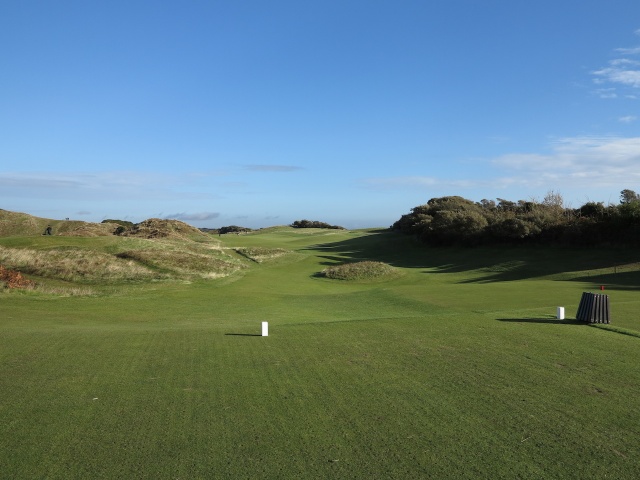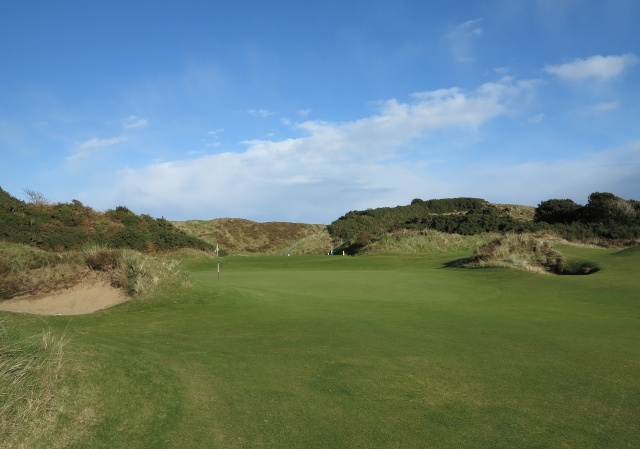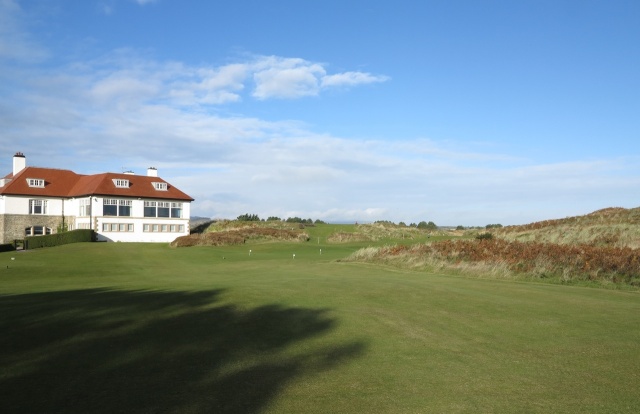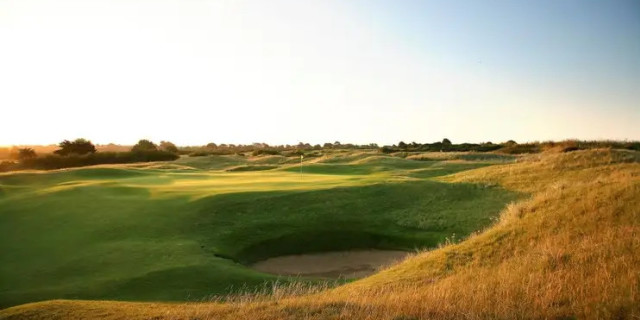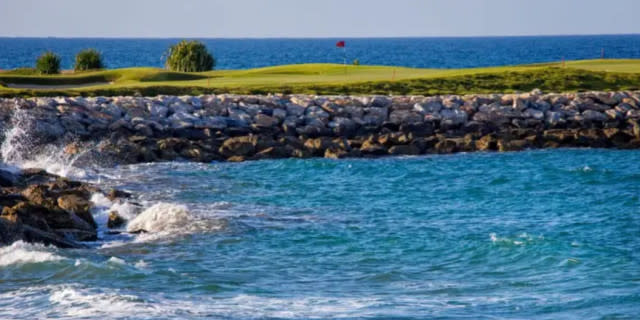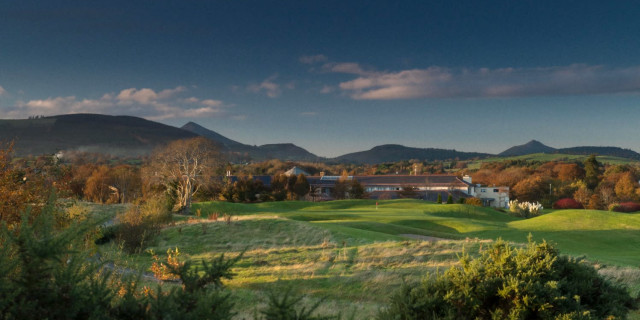
Royal County Down Feature Review
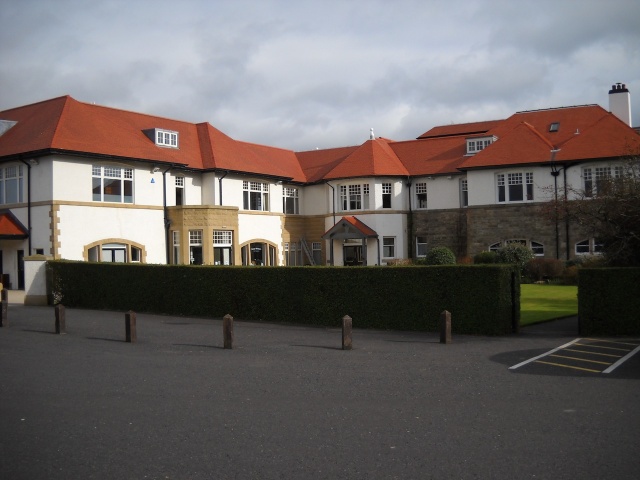 My friend David flew in from the United States, landing in Dublin before sunrise. He drove his hire car ever northwards for almost two hours, heading for the rust-coloured Mourne Mountains. Once there and in glorious sunshine he teed it up on the par five 1st of one of the world’s greatest courses and split the fairway with his drive.
My friend David flew in from the United States, landing in Dublin before sunrise. He drove his hire car ever northwards for almost two hours, heading for the rust-coloured Mourne Mountains. Once there and in glorious sunshine he teed it up on the par five 1st of one of the world’s greatest courses and split the fairway with his drive.
It doesn’t get much better than that… but it did. Two shots later, David sank an eight foot putt for an eagle. Royal County Down doesn’t give up many eagles, and one on the 1st hole is as good as a trophy on the mantelpiece.
There is something perfect about playing links golf on a raw autumn day. The wind like sandpaper against your cheeks, the sun carving shadows across the dunes, the sea trembling over sand and rock.
This is the time of year that links courses are at their most generous, with softer fairways and more forgiving greens… more forgiving green fees too.
There are disadvantages, however, and not simply the weather. Of greater concern for many is the prospect of playing off mats, or having to lift your ball off the fairway and place in the rough.
Royal County Down, nestled under the Mourne Mountains, suffers from neither of these, being playable all year round. It gives the club a magical charm, a superiority richly deserved and the type of aura that rises through the soil and into your very being. It starts the moment you drive into the club.
It is said that St Andrew’s is the home of golf… if that is so, then Royal County Down is its soul. The names of Old Tom Morris, with a touch of Braid, Vardon and Sayers, and the important contribution from Harry Colt in the 1920s and Donald Steel in the 1990s and 2000s, are ingrained in the club’s history as well as in the turf that golfers walk over every day. When you step through the white gate to reach the 1st tee, you pass between two practice greens: the expansive, rolling Himalayas on your right and a smaller, almost inconsequential green on your left. Ignore the latter at your peril. Not only is this one of Old Tom Morris’s original greens, dating back to the 19th century, it will also give you the exact speed of the greens on the course.
David and I played from the forward tees, a reassuring 6,675 yards (par 71). It made the course more manageable, but unless you’re playing from the Championship tees (7,186 yards), Royal County Down is no beast. Famous it may be for its blind shots but it is not ungenerous. Assuming, that is, you stay clear of the fabled bunkers with their beards of marram grass and heather. The marram thrives in the wind, so much so that some bunkers look like they should be playing in the opposite direction. But put your shot in one and you could be splashing out sideways.
The opening three holes run along the sea shore, the second presenting a blind drive and, possibly a blind approach. A caddie will prove invaluable as there is much to fool the eye. There are no hard and fast rules for Royal County Down, but the one tactic to remember is that you can (and probably should) always land the ball short of the green. The par three 4th is a case in point. A long par three (200+ yards) it is both the best viewing point of the round and one of the most intimidating shots you’ll face. From the tee box you have the sea to your left and the Mourne Mountains laid out dead ahead – the only thing between you and them being the run of dunes that make up this sublime golf course and the striking Slieve Donard Hotel (where many golfers stay – budget permitting). The surroundings are drenched in gorse and the hole is slotted in, with fall-offs around the green… yet there is 15 yards of unseen landing area short of the putting surface.
Royal County Down is laid out in two loops, the front nine being closer to the sea. Many would say that the opening nine holes are among the best on the island – and even further afield – and with holes like the 2nd, 3rd, 4th, 8th and 9th, it is hard to argue. The 9th is par four Index 1 and is a more intimidating tee shot than the 4th… in fact, it may be the most intimidating drive in the game of golf. It is a blind shot that rises up an enormous dune’s shoulder and then drops sharply to a valley before streaking straight to the green. The drive needs to be long and straight or your ball may never be found. There will be some golfers who simply won’t have the distance to breach the dune and will have to play it as a par five.
The back nine starts in much the same vein, with the 11th offering another tall dune to be hit over and climbed. The 13th is the favourite of many golfers, a sliding dogleg right, tucked low between gorse-infested ridges. A pole indicates the green position, but it can only be attacked from the left hand side of the fairway. There is nothing like the joy of playing a course this spectacular and finding your drive on the fairway; there is nothing as humbling as discovering you are on the wrong side to hit in to the green. Royal County Down is, blissfully, not as harsh as some links courses in this regard (holes 2, 13 and 18 being the most demanding) which makes it all the more playable… and enjoyable.
The course changes pace after the 13th, turning inland, but apart from the odd 17th (a pond mid-fairway) the holes still thrill and test.
It is worth noting that the smaller Annesley course weaves through the big championship links and is also worth playing – preferably first – as it will introduce you to the shapes and challenges to come. It is only a par 66, but it is certainly entertaining. Also entertaining is the clubhouse where you’ll find hordes of photographs of the greats playing the course. Spend some time and soak up the atmosphere of a remarkable golf club.
Green fees rise to £185 during the summer peak, but drop to a mere £50 from November to February.
Images: Copyright Kevin Markham
Kevin Markham is an Irish golf writer, blogger and photographer who writes for a number of Irish and UK golf websites & magazines. His book 'Hooked: An Amateur's Guide to the Golf Courses of Ireland' was published in 2011 and reviews all 350 golf courses which he played whilst travelling round Ireland in a campervan.
To read his blog visit: www.theirishgolfblog.com
About the author

Kevin Markham is an Irish golf writer and photographer known for his extensive knowledge of courses across Ireland and beyond. He has played every 18-hole course in Ireland and authored two books about his travels, Hooked and Driving The Green. As well as contributing to Golfshake, he writes for various golf publications in Ireland and the UK. Kevin combines writing with photography, capturing the unique character of courses wherever he plays, and continues to share his passion for the game through his blog, The Irish Golf Blog.
Related Content:

